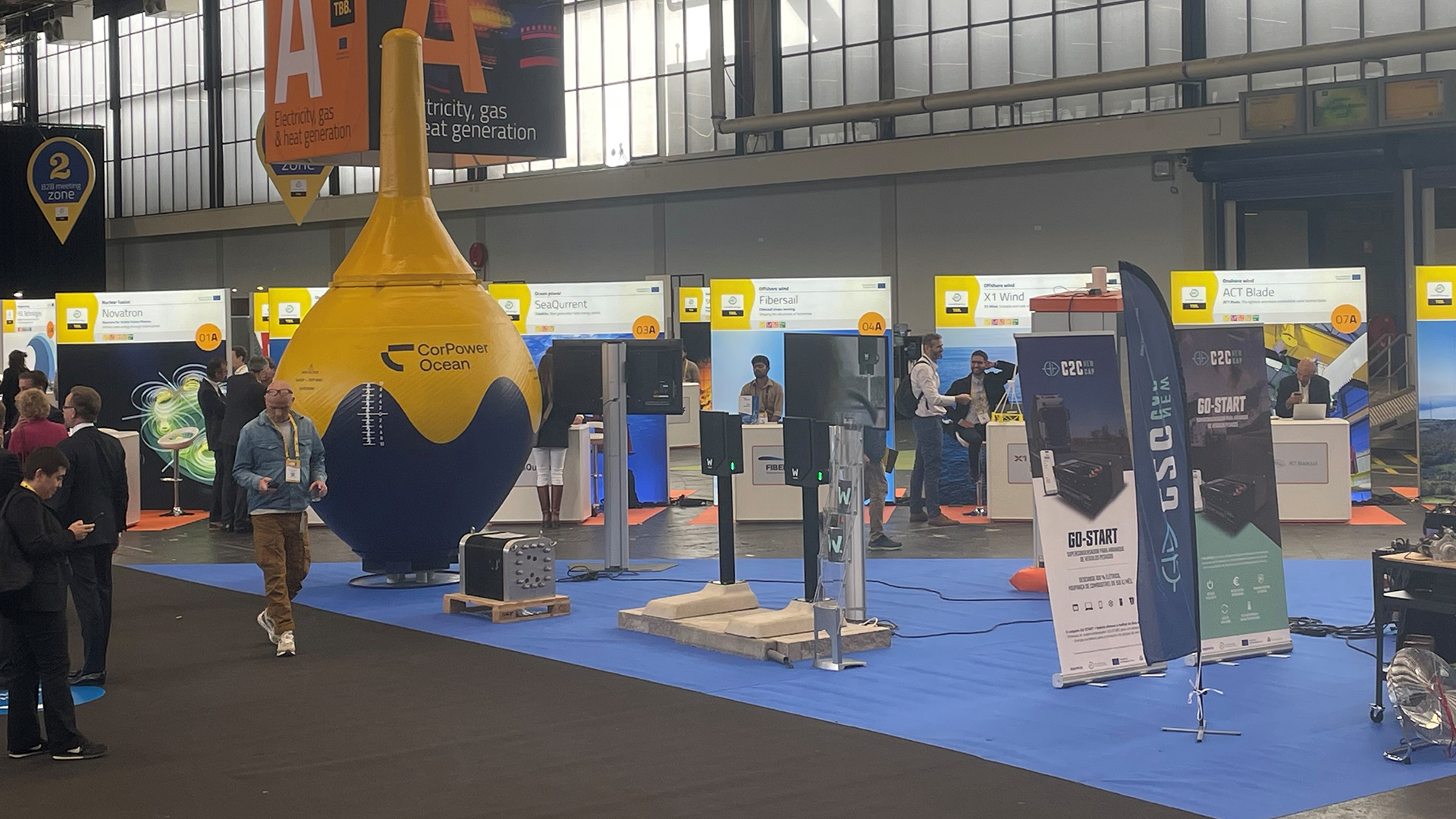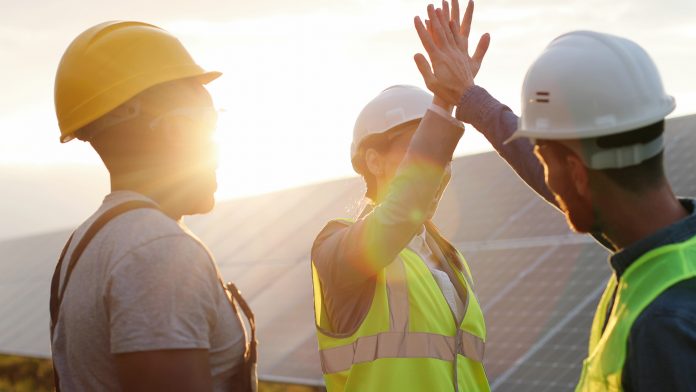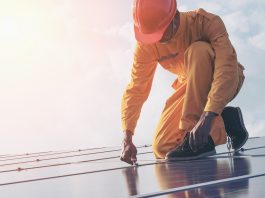Innovation News Network sat down with Elena Bou, Innovation Director at EIT InnoEnergy, to find out how Europe can solve its green energy skills shortage.
The green energy transition represents a monumental shift in how Europe generates, consumes, and thinks about energy. Rooted in a pressing need to combat climate change and reduce the environmental impact of energy production, this transformative journey is more than just a technological revolution; it is a commitment to a sustainable and low-carbon future.
As nations across Europe embark on this journey, they invest in innovative technologies, embrace energy efficiency, reimagine their energy infrastructure, create jobs, foster technological innovation, and enhance energy independence.
However, despite 2023 ramping up to be a significant year on the road to climate neutrality by 2050, there is still much progress to be made for Europe to accelerate its green transition.
Two primary issues facing the development of Europe’s green economy are fuelling clean energy innovators with the funding they need to scale operations and reskilling and training a workforce to overcome the green energy skills shortage.
We spoke to Elena Bou at EIT’s The Business Booster to understand these issues more.

You recently mentioned that capital doesn’t always get to those needing it at the right time. How is Europe working to address this issue?
There is a financial gap, and this has two different aspects. One is the timing – the time to cash. We have realised that in other countries like the United States, funding arrives to the one who needs it much faster.
One of the reasons is that their processes are more aligned. They quickly identify the objective and supply money. However, here in Europe, the processes involve many different actors, such as the European Union and the Member States, which takes more time.
However, the problem is that these clean technology startup companies sometimes need the cash right now or a few months – they cannot wait for years. Whereas with the Inflation Reduction Act (IRA), the US has mobilised $110,000,000,000, meaning their startups have access to significant resources.
In Europe, some of these startups are waiting more than a year to receive that cash because of the long process and bureaucracy. The US has shown how to speed this up, and we can do it also; it’s just a question of streamlining some of Europe’s processes.
Another problem or challenge that we have in terms of finance is that the financial instruments sometimes are not tailored to the needs of the clean tech startup. For example, with an infrastructure startup, such as a gigafactory, the technology risk is not the central aspect, but there is an organisational risk, such as how they will create a vertical value chain.
This means these young companies need a large ticket. Where do you go for funding if you are very young company? To a venture capital (VC) bank, who will say no way because it is a super large ticket. They will say this is infrastructure; this is not a VC bank type of company. So, then, where do they go? To a commercial bank.
But a commercial bank will say this is too much risk; you don’t have a balance sheet and are therefore not bankable. This is the same problem they have with tough tech – a type of startup that is super capital intensive but simultaneously has a technological risk.
What we are trying to do at InnoEnergy is that when any of these startups start working with us, one of the first things we do is to create a roadmap with business milestones. In parallel, we start preparing the funding plan according to the different stages. This way, we know in advance when they will need capital and then we help them to decide what is the best type of capital, such as public or private.

Of course, we don’t have the power to change how the grant processes work, but we are trying to make it as fast as possible, and when we are investing ourselves, it is very quick because our investment committee does it.
Do you think enough is being done from a government perspective to remove this red tape and bureaucracy, or do you think there’s still a long way to go?
I think that Europe can do much better. I think that we are still sometimes fragmented. The IRA, for instance, has very simple criteria. There is a simple yes or no checklist, but in Europe, the process is more about judgement, such as people analysing what is disruptive innovation, and sometimes, they will agree it is disruptive and other times, they will say this technology is not a breakthrough.
So, the criteria are far more subjective and not clear, which delays the process, and this is something that we could work on to create clearer criteria. Another advantage for companies in the US is that through the IRA, they all apply to the Department of Energy – all of them. They send applications, and then it is a yes or no; you are granted, or you are not granted. In Europe, it is much more complicated.
In the European framework, sometimes, this support is deployed by the local authorities. For instance, it goes to Spain and then to the region, which again takes more time. As an entrepreneur, you want to have the resources when you need them, which is a frustration for companies as they have been granted investment, but by the time it is given, the company is not there anymore.
Developing the technology is one thing, but there’s also the issue of Europe’s green energy skills shortage. How do authorities go about addressing this?
We need two types of renewable energy skills, and some are focused on these new jobs for the green transition. For instance, the automotive industry may not need many mechanical engineers, but they do need chemistry experts. One of the things we’re doing at the InnoEnergy Skills Institute is we are working to reskill the workforce so that the talent is there to scale all of these types of technologies.
There is also another type of green energy skills shortage that is super important, which is the transformative skill – people who can change the mindset of a company and industry. For example, our Master’s School has 1600 graduates, and these people are engineers but are wired differently. They not only solve problems as engineers do but also understand that these problems should be analysed with a sustainable, innovative perspective.
These people are super relevant because they are working in the energy system today, in the energy companies, and they are changing the system from the inside. It’s not just about bringing new technical skills; it’s about how these people are helping companies adopt a new mindset.
We need to change the industry. We must go to traditional oil and gas firms to change the industry from the inside. They really need this new generation of green experts because they will present a completely different outlook, which will be equally key to the energy transition – these transformative types of skills are essential.
On the other hand, we need lots of technical skills because of scarcity, with around 80% of corporates saying that the green energy skills shortage is preventing clean tech projects from happening. We have seen that the US is much faster at adopting these skills, and the reason is that in the US, training is seen as an investment, whereas in Europe, training is seen as a cost.
The question is then about who is fronting the bill. Corporations will say it is not their role as it’s a major change, and local authorities will say it is not their role because it is an industry problem. We need much more collaboration between local authorities and corporates because this is a massive change. They need to work together and think about this topic as an investment.
Work must also be done to increase working mobility across Europe. We have the expertise to address the green energy skills shortage who are willing to move to other countries in the EU, but when they want to come back, how do their pension and social security work?
These aspects should be simple so that people can move very freely; simplifying mobility for our green energy talent is essential. Sometimes, we say that the bottlenecks are the raw materials, but at this moment, the weakest link in the whole value chain is the green energy skills shortage.
How do we transition skills and expertise into the green sector?
At EIT InnoEnergy, we are trying to offer a solution in terms of training so that we can reskill the workforce and create these game changers with transformational skills that can start working in the industry and are in a position to change it from inside.
I think we are also an inspiration to raise important questions because we are free. We are not involved in the oil and gas industry, and we don’t manufacture cars. We are free to ask why these types of companies don’t try to use their abilities and skills in a sustainable way.

For example, the oil and gas industry should be part of the solution. However, they need to be brave, and the people making corporate decisions are the ones who may not be there to reap the benefits, as these are long-term transformations.
So, would a CEO of one of these big companies make these decisions that will not be the most popular ones because it will be transformational change when they may not even be the CEO anymore once they start to pay off?
Interestingly, the oil and gas industry has been increasingly raising dividends in the last few months, and many of their investors are investing these dividends in sustainable energy companies. It appears that even their investors don’t believe that the oil and gas industry can change.
We are convinced the energy transition is going to happen – it’s just a question of when and to what speed. If oil and gas are part of the solution, we will go faster.









